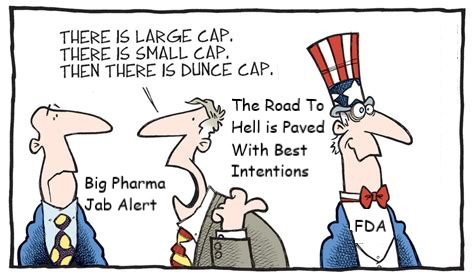Authors: Nazeeh Hanna, MD1; Ari Heffes-Doon, MD1; Xinhua Lin, PhD2; et al JAMA Pediatr. Published online September 26, 2022. doi:10.1001/jamapediatrics.2022.3581
Vaccination is a cornerstone in fighting the COVID-19 pandemic. However, the initial messenger RNA (mRNA) vaccine clinical trials excluded several vulnerable groups, including young children and lactating individuals.1 The US Food and Drug Administration deferred the decision to authorize COVID-19 mRNA vaccines for infants younger than 6 months until more data are available because of the potential priming of the children’s immune responses that may alter their immunity.2 The Centers for Disease Control and Prevention recommends offering the COVID-19 mRNA vaccines to breastfeeding individuals,3 although the possible passage of vaccine mRNAs in breast milk resulting in infants’ exposure at younger than 6 months was not investigated. This study investigated whether the COVID-19 vaccine mRNA can be detected in the expressed breast milk (EBM) of lactating individuals receiving the vaccination within 6 months after delivery.
This cohort study included 11 healthy lactating individuals who received either the Moderna mRNA-1273 vaccine (n = 5) or the Pfizer BNT162b2 vaccine (n = 6) within 6 months after delivery (Table 1). Participants were asked to collect and immediately freeze EBM samples at home until transported to the laboratory. Samples of EBM were collected before vaccination (control) and for 5 days postvaccination. A total of 131 EBM samples were collected 1 hour to 5 days after vaccine administration. Extracellular vesicles (EVs) were isolated in EBM using sequential centrifugation, and the EV concentrations were determined by ZetaView (Analytik) (eMethods in the Supplement). The presence of COVID-19 vaccine mRNA in different milk fractions (whole EBM, fat, cells, and supernatant EVs) was assayed using 2-step quantitative reverse transcriptase–polymerase chain reaction. The vaccine detection limit was 1 pg/mL of EBM (eMethods in the Supplement).
Of 11 lactating individuals enrolled, trace amounts of BNT162b2 and mRNA-1273 COVID-19 mRNA vaccines were detected in 7 samples from 5 different participants at various times up to 45 hours postvaccination (Table 2). The mean (SD) yield of EVs isolated from EBM was 9.110 (5.010) particles/mL, and the mean (SD) particle size was 110.0 (3.0) nm. The vaccine mRNA appears in higher concentrations in the EVs than in whole milk (Table 2). No vaccine mRNA was detected in prevaccination or postvaccination EBM samples beyond 48 hours of collection. Also, no COVID-19 vaccine mRNA was detected in the EBM fat fraction or the EBM cell pellets.
The sporadic presence and trace quantities of COVID-19 vaccine mRNA detected in EBM suggest that breastfeeding after COVID-19 mRNA vaccination is safe, particularly beyond 48 hours after vaccination. These data demonstrate for the first time to our knowledge the biodistribution of COVID-19 vaccine mRNA to mammary cells and the potential ability of tissue EVs to package the vaccine mRNA that can be transported to distant cells. Little has been reported on lipid nanoparticle biodistribution and localization in human tissues after COVID-19 mRNA vaccination. In rats, up to 3 days following intramuscular administration, low vaccine mRNA levels were detected in the heart, lung, testis, and brain tissues, indicating tissue biodistribution.4 We speculate that, following the vaccine administration, lipid nanoparticles containing the vaccine mRNA are carried to mammary glands via hematogenous and/or lymphatic routes.5,6 Furthermore, we speculate that vaccine mRNA released into mammary cell cytosol can be recruited into developing EVs that are later secreted in EBM.
The limitations of this study include the relatively small sample size and the lack of functional studies demonstrating whether detected vaccine mRNA is translationally active. Also, we did not test the possible cumulative vaccine mRNA exposure after frequent breastfeeding in infants. We believe it is safe to breastfeed after maternal COVID-19 vaccination. However, caution is warranted about breastfeeding children younger than 6 months in the first 48 hours after maternal vaccination until more safety studies are conducted. In addition, the potential interference of COVID-19 vaccine mRNA with the immune response to multiple routine vaccines given to infants during the first 6 months of age needs to be considered. It is critical that lactating individuals be included in future vaccination trials to better evaluate the effect of mRNA vaccines on lactation outcomes.
References
1. Van Spall HGC. Exclusion of pregnant and lactating women from COVID-19 vaccine trials: a missed opportunity. Eur Heart J. 2021;42(28):2724-2726. doi:10.1093/eurheartj/ehab103PubMedGoogle ScholarCrossref
2. US Food and Drug Administration. Coronavirus (COVID-19) update: FDA authorizes Moderna and Pfizer-BioNTech COVID-19 vaccines for children down to 6 months of age. Released June 17, 2022. https://www.fda.gov/news-events/press-announcements/coronavirus-covid-19-update-fda-authorizes-moderna-and-pfizer-biontech-covid-19-vaccines-children
3. Centers for Disease Control and Prevention. COVID-19 vaccines while pregnant or breastfeeding. Accessed March 8, 2021. https://www.cdc.gov/coronavirus/2019-ncov/vaccines/recommendations/pregnancy.html.
4. European Medicines Agency. Assessment report: COVID-19 vaccine Moderna. Published March 11, 2021. http://www.ema.europa.eu/en/documents/assessment-report/spikevax-previously-covid-19-vaccine-moderna-epar-public-assessment-report_en.pdf.
5. Pardi N, Tuyishime S, Muramatsu H, et al. Expression kinetics of nucleoside-modified mRNA delivered in lipid nanoparticles to mice by various routes. J Control Release. 2015;217:345-351. doi:10.1016/j.jconrel.2015.08.007PubMedGoogle ScholarCrossref
6. Bansal S, Perincheri S, Fleming T, et al. Cutting edge: circulating exosomes with COVID spike protein are induced by BNT162b2 (Pfizer-BioNTech) vaccination prior to development of antibodies: a novel mechanism for immune activation by mRNA vaccines. J Immunol. 2021;207(10):2405-2410. doi:10.4049/jimmunol.2100637PubMedGoogle ScholarCrossref
